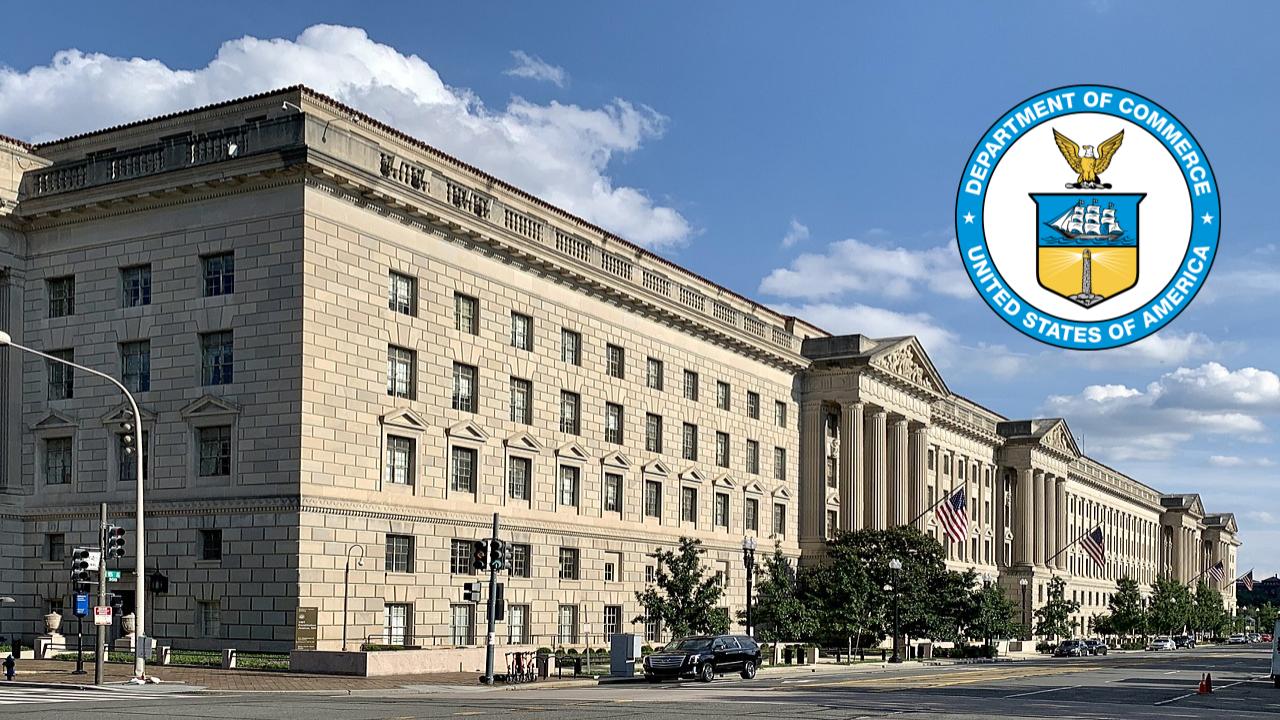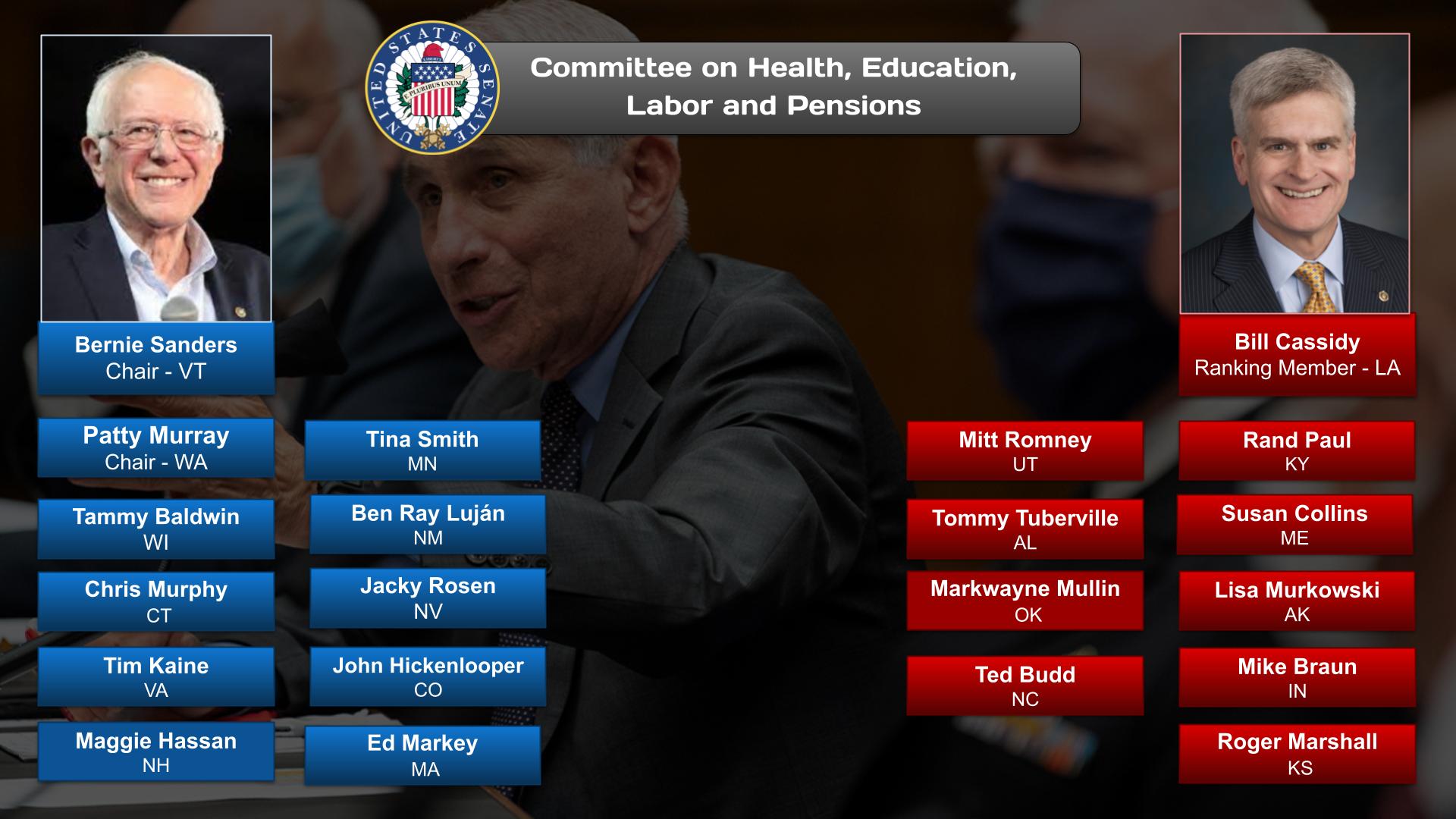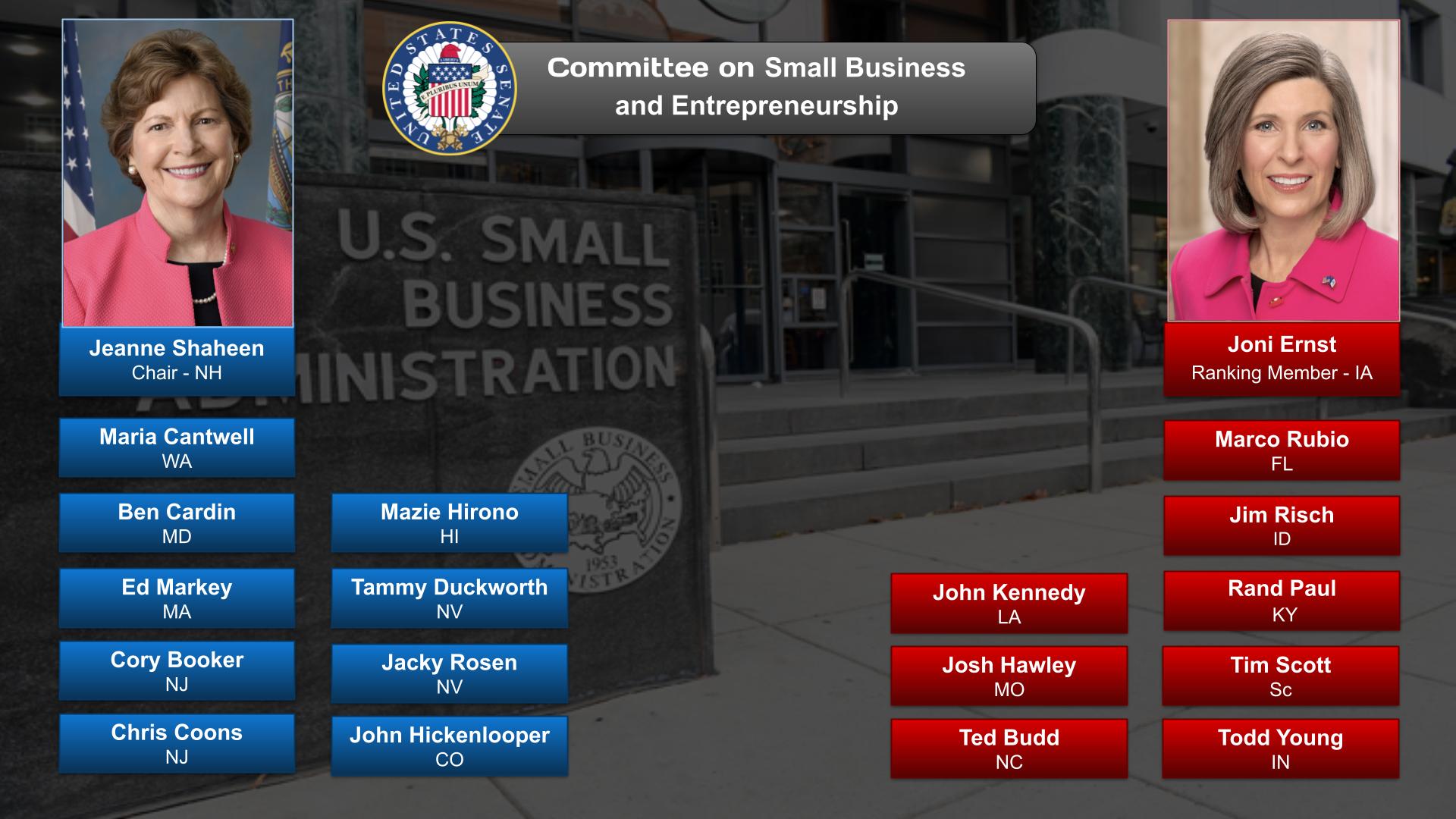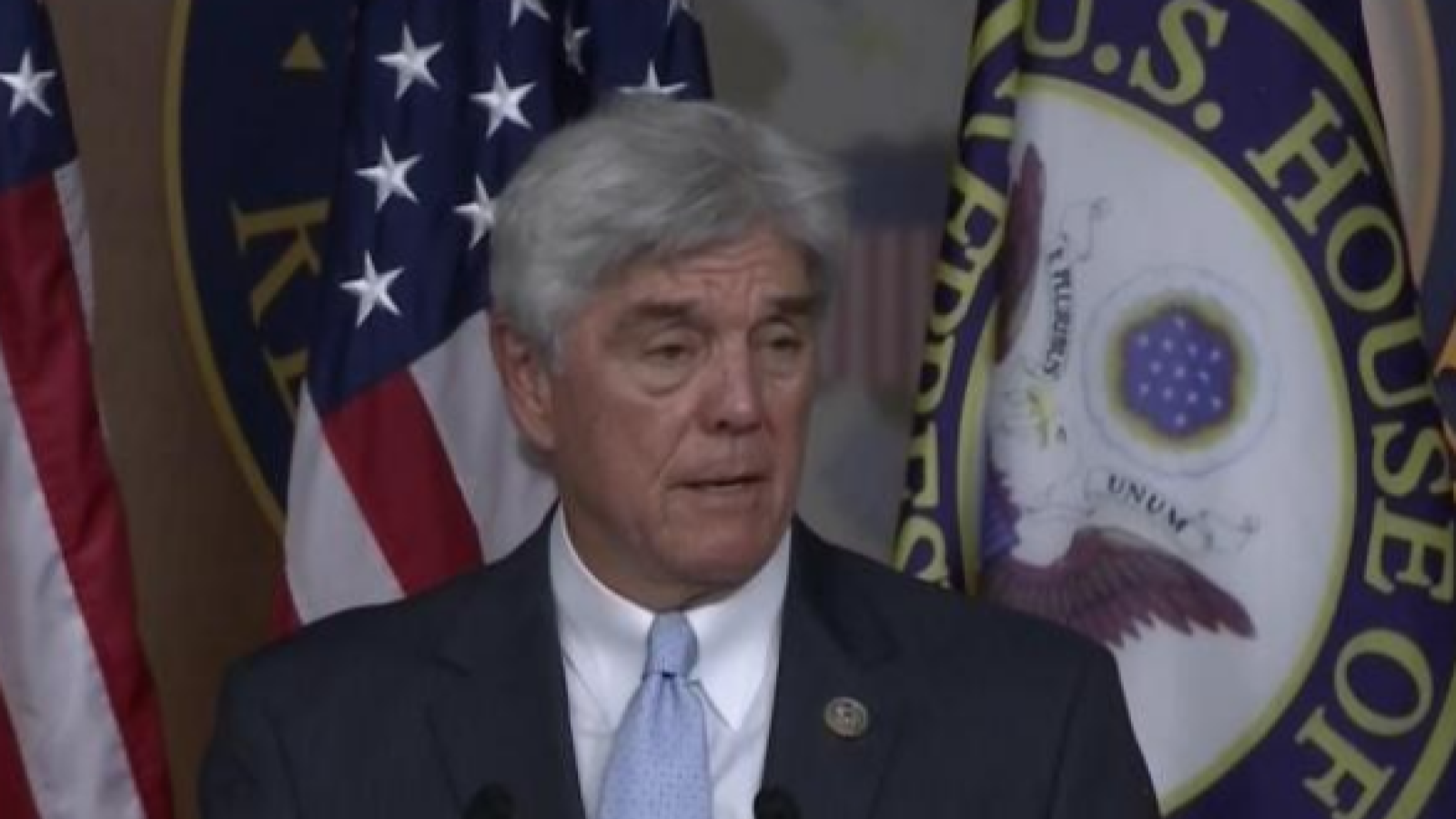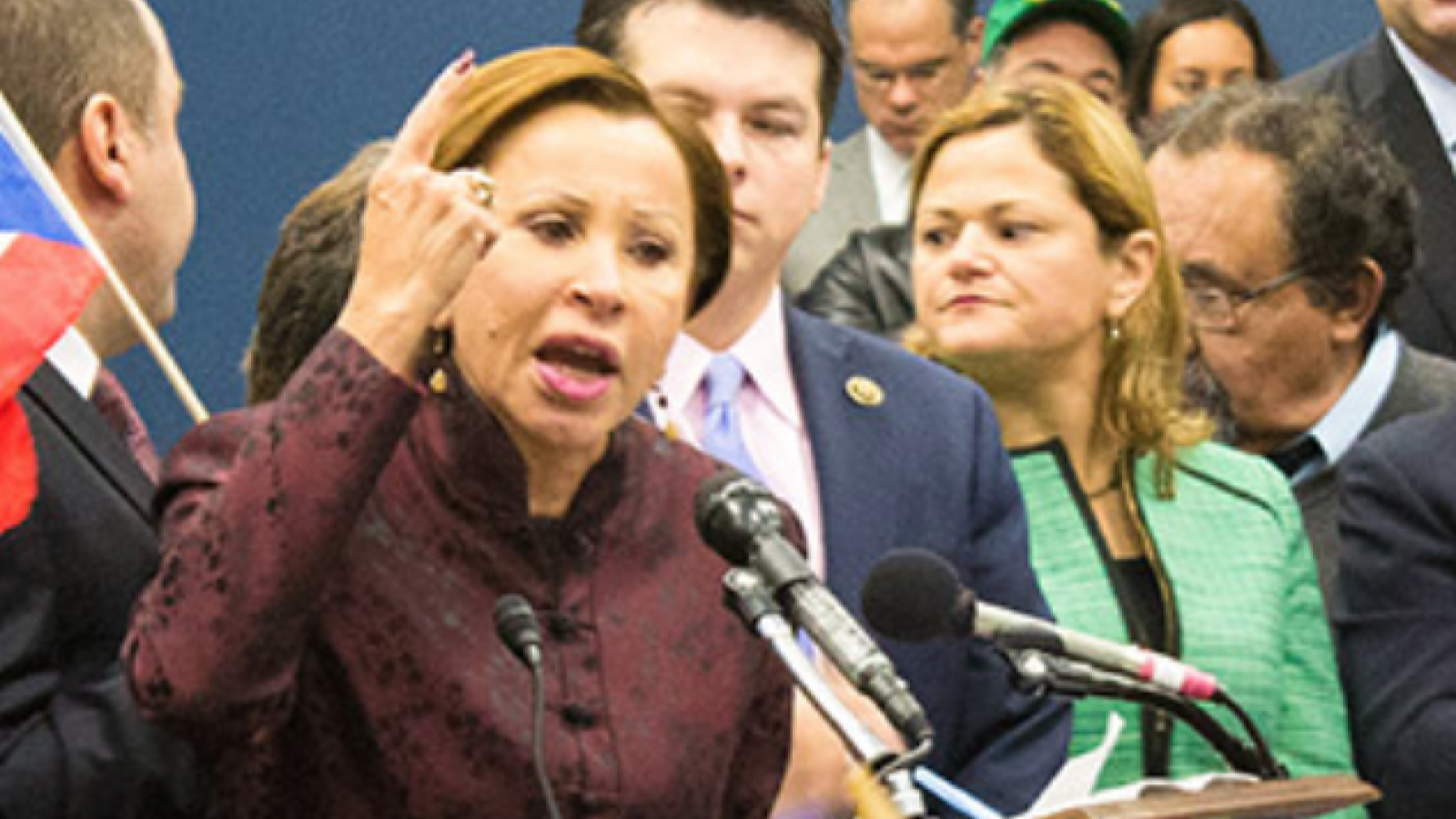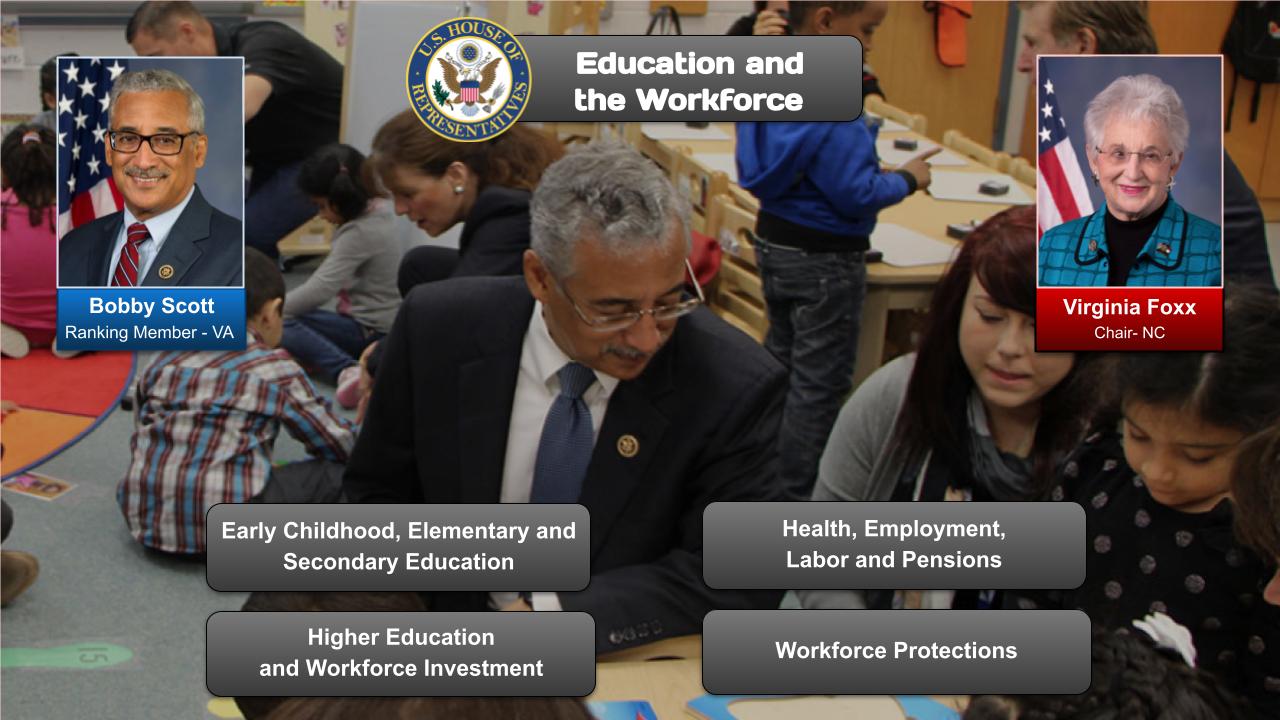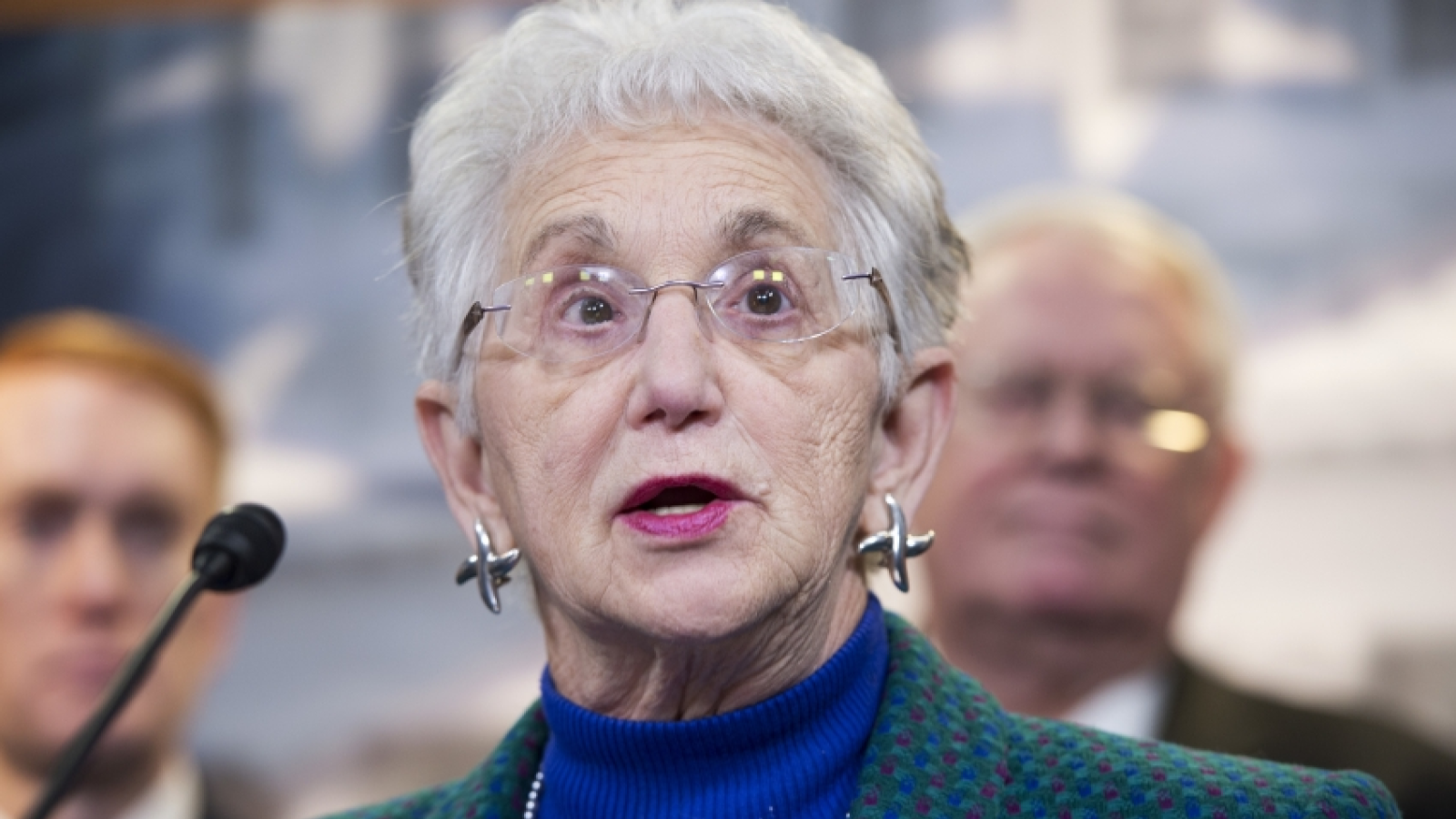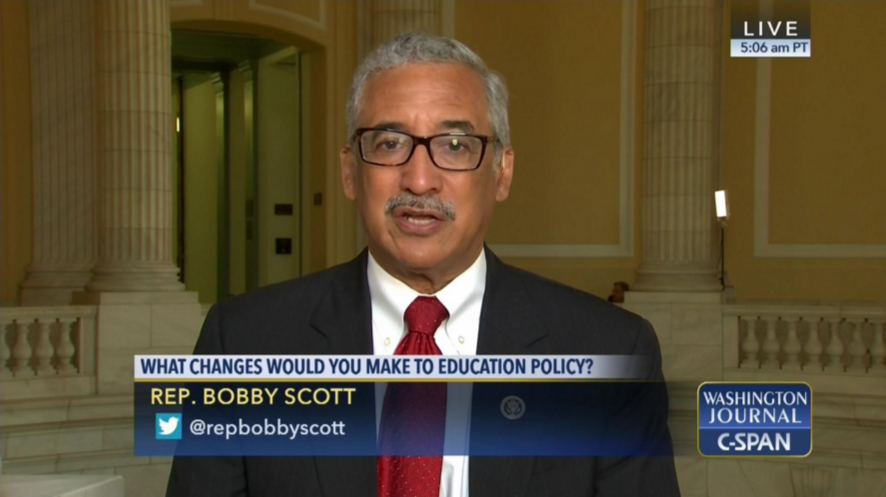Summary
This post on Apprenticeships is 1 of 3 issues that US onAir curators are focusing on in the Education category.
Apprenticeship programs in the United States are regulated by the Smith–Hughes Act (1917), The National Industrial Recovery Act (1933), and National Apprenticeship Act, also known as the “Fitzgerald Act.”
The number of American apprentices has increased from 375,000 in 2014 to 500,000 in 2016, while the federal government intends to see 750,000 by 2019, particularly by expanding the apprenticeship model to include white-collar occupations such as information technology.
Source: Wikipedia
OnAir Post: Apprenticeships
News
PBS NewsHour – July 1, 2021 (09:00)
Even before the pandemic sent shock waves through the U.S economy, innovation had always been a key to success in business. As part of our “Work Shift” series, economics correspondent Paul Solman looks at one businessman whose determination to locate his technology company — Interapt — far from Silicon Valley led to a new twist on a very old business model: the apprenticeship.
About
Check the Education post for the party positions, committees, government agencies related to Apprenticeships issues.
Challenges
1. Funding and Sustainability:
- Ensuring adequate and sustainable funding for apprenticeship programs can be challenging, especially in times of economic downturn.
- The cost of apprenticeship programs can be significant, including training, mentorship, and employer support.
2. Recruitment and Onboarding:
- Attracting and recruiting a diverse pool of apprentices can be challenging.
- Apprentices need to meet specific eligibility criteria and possess the required skills and knowledge.
- Ensuring a smooth onboarding process is crucial for apprentice retention.
3. Employer Engagement:
- Engaging employers to offer apprenticeship opportunities is essential.
- Employers need to be convinced of the benefits of hiring apprentices and be willing to invest in their training.
- Developing partnerships and collaborations between educational institutions and employers is vital.
4. Program Quality and Standards:
- Maintaining the quality and consistency of apprenticeship programs requires rigorous standards and oversight.
- Ensuring that apprentices receive relevant and high-quality training is crucial for their success.
- Developing and implementing apprenticeship standards is important for industry recognition and credibility.
5. Apprenticeship Duration and Progression:
- The duration of apprenticeship programs can vary widely, which can impact apprentice retention.
- Providing clear pathways for progression and career advancement within apprenticeships is essential.
- Balancing the need for efficiency with ensuring apprentices acquire the necessary skills and experience can be challenging.
6. Assessment and Evaluation:
- Assessing apprentice progress and evaluating the effectiveness of apprenticeship programs is crucial.
- Developing valid and reliable assessment tools and criteria can be challenging.
- Ensuring公平 and consistent evaluation processes is important.
7. Supportive Environment:
- Creating a supportive environment for apprentices is essential for their success.
- Providing mentorship, guidance, and access to resources can enhance apprentice retention and well-being.
- Fostering a culture of collaboration and support among stakeholders is important.
8. Diversity and Inclusion:
- Ensuring apprenticeship programs are diverse and inclusive is crucial for promoting equity.
- Addressing disparities in access and participation for underrepresented groups is essential.
- Creating inclusive apprenticeships that cater to the needs of all apprentices is important.
9. Technological Advancements:
- Keeping pace with technological advancements can be challenging for apprenticeship programs.
- Ensuring apprentices acquire the skills necessary for emerging technologies is vital.
- Adapting apprenticeship training to incorporate new technologies is important.
10. Recognition and Recognition:
- Increasing the recognition and credibility of apprenticeships is important for their long-term success.
- Developing national or industry-wide standards and certifications can enhance the value of apprenticeships.
- Promoting the benefits of apprenticeship programs to policymakers and the public is essential.
Source: Google Search + Gemini + onAir curation
Solutions
1. Lack of Employer Participation:
- Incentivize employers: Offer tax credits, subsidies, or matching grants to businesses that establish or expand apprenticeship programs.
- Build employer partnerships: Foster collaborations between industry, educational institutions, and workforce agencies to promote apprenticeship opportunities.
- Promote awareness: Showcase the benefits of apprenticeships to employers and highlight success stories to build credibility.
2. Limited Apprenticeship Opportunities:
- Expand funding: Increase government funding for apprenticeship programs, particularly in underrepresented sectors and areas.
- Develop new models: Explore innovative apprenticeship models, such as sector-based or blended learning approaches, to meet evolving industry needs.
- Foster partnerships: Facilitate partnerships between community colleges, unions, and employers to expand apprenticeship pathways.
3. Lack of Diversity:
- Targeted outreach: Reach out to underrepresented groups through community organizations, workforce agencies, and mentorship programs.
- Inclusive policies: Establish policies that prohibit discrimination and promote a welcoming environment for apprentices of all backgrounds.
- Mentorship and support: Provide mentorship and support programs to ensure apprentices from diverse backgrounds feel supported and succeed.
4. Quality Assurance:
- Set standards: Develop and maintain rigorous apprenticeship standards that ensure apprentices receive high-quality training.
- Monitor and evaluate: Conduct regular monitoring and evaluations of apprenticeship programs to ensure they meet quality benchmarks.
- Provide technical assistance: Offer technical assistance to employers and training providers to help them improve apprenticeship quality.
5. Alignment with Labor Market Needs:
- Industry collaboration: Engage with industry leaders to identify emerging skills and workforce needs and align apprenticeship programs accordingly.
- Career pathways: Provide clear career pathways for apprentices, outlining the skills and credentials they will acquire and the potential for advancement.
- Lifelong learning: Promote lifelong learning by encouraging apprentices to pursue additional training and certifications to stay up-to-date with industry changes.
6. Sustainability:
- Secure long-term funding: Explore sustainable funding models for apprenticeship programs, such as industry contributions or government partnerships.
- Build capacity: Train more instructors and support staff to meet the growing demand for high-quality apprenticeship training.
- Promote advocacy: Engage policymakers and stakeholders to advocate for continued support and improvement of apprenticeship programs.
Source: Google Search + Gemini + onAir curation
Websites
Government Agencies
- US Department of Labor, Office of Apprenticeship: https://www.dol.gov/agencies/apprenticeship
- US Department of Education, Office of Vocational and Adult Education: https://www2.ed.gov/about/offices/list/ovae.html
- National Apprenticeship and Training Standards (NATS): https://www.apprenticeship.gov/nats-directory
- Apprenticeship USA: https://apprenticeshipusa.org/ (non-profit organization supporting apprenticeships)
Industry Associations
- National Association of State and Territorial Apprenticeship Directors (NASTAD): https://www.nastad.org/
- Associated General Contractors of America (AGC): https://www.agc.org/
- National Electrical Contractors Association (NECA): https://www.necanet.org/
- United Association of Plumbers and Pipefitters (UA): https://www.ua.org/
Educational Institutions
- Apprenticeship Clearinghouse: https://www.apprenticeshipclearinghouse.org/ (database of registered apprenticeship programs)
- CareerOneStop: https://www.careeronestop.org/ (provides information on apprenticeships and other career training options)
- National Center for Construction Education and Research (NCCER): https://www.nccer.org/ (non-profit organization providing training and certification for the construction industry)
Other Resources
- Apprenticeship Finder Tool: https://apprenticeshipfinder.org/ (tool to search for registered apprenticeship programs)
- National Apprenticeship Act: https://www.dol.gov/agencies/apprenticeship/laws (federal law that established and regulates apprenticeship programs)
- NASTAD Connect: https://www.nastad.org/connect (platform for employers and apprenticeship programs to connect with job seekers)
Source: Google Search + Gemini + onAir curation
Legislation
See Congress.Gov link above for latest updates and for learning what bills your representatives are sponsoring.
Laws
Source: Google Search + Gemini + onAir curation
Workforce Innovation and Opportunity Act (WIOA) (2014)
- Created a national framework for apprenticeship programs.
- Provides funding for apprenticeship programs through the Department of Labor (DOL).
- Established the Office of Apprenticeship within the DOL to oversee apprenticeship programs.
Apprenticeship Expansion Act (2017)
- Expanded the definition of apprenticeship programs to include non-union programs.
- Increased funding for apprenticeship programs.
- Created a “Youth Apprenticeship” program for high school students.
Job Training for Workers with Disabilities Improvement Act (2014)
- Requires federal contractors to provide apprenticeship opportunities for individuals with disabilities.
- Provides funding for apprenticeship programs for individuals with disabilities.
- Creates a “National Council on Disability Employment” to advise the President on policies related to employment of individuals with disabilities.
Veterans Apprenticeship Act (2017)
- Creates a tax credit for employers who hire veterans as apprentices.
- Provides funding for apprenticeship programs for veterans.
- Establishes a “National Center for Veterans Apprenticeship” to provide support and resources to veterans in apprenticeship programs.
Support for Veterans Employment, Education, and Training Act (2020)
- Expands the Veterans Apprenticeship Act by providing additional tax credits for employers who hire veterans as apprentices.
- Creates a “National Apprenticeship Hub” to provide information and resources on apprenticeship programs for veterans.
- Establishes a “Veterans Apprenticeship Employment Navigator Program” to provide support and guidance to veterans in apprenticeship programs.
Bills Introduced 2023-2024
Sampling of Bills:
H.R.2900 Apprenticeship Hubs Across America Act of 2023
Sponsor: Norcross, Donald [Rep.-D-NJ-1] (Introduced 04/26/2023)
Cosponsors: (24)
Committees: House – Education and the WorkforceLatest Action: House – 04/26/2023 Referred to the House Committee on Education and the Workforce. (All Actions)
H.R.2851 National Apprenticeship Act of 2023
Sponsor: Scott, Robert C. “Bobby” [Rep.-D-VA-3] (Introduced 04/25/2023)
Cosponsors: (59)
Committees: House – Education and the Workforce; Judiciary
Latest Action: House – 04/25/2023 Referred to the Committee on Education and the Workforce, and in addition to the Committee on the Judiciary, for a period to be subsequently determined by the Speaker, in each case for consideration of such provisions as fall within the jurisdiction of the… (All Actions)
H.R.329 American Workforce Empowerment Act
Sponsor: Finstad, Brad [Rep.-R-MN-1] (Introduced 01/12/2023)
Cosponsors: (69)
Committees: House – Ways and Means
Latest Action: House – 01/12/2023 Referred to the House Committee on Ways and Means. (All Actions)
H.R.6377 ARCC Act
Sponsor: Cuellar, Henry [Rep.-D-TX-28] (Introduced 11/13/2023)
Cosponsors: (45)
Committees: House – Education and the Workforce; Ways and Means
Latest Action: House – 11/13/2023 Referred to the Committee on Education and the Workforce, and in addition to the Committee on Ways and Means, for a period to be subsequently determined by the Speaker, in each case for consideration of such provisions as fall within the jurisdiction of the… (All Actions)
H.R.5783 — Blue Collar and Green Collar Jobs Development Act
Sponsor: Blunt Rochester, Lisa [Rep.-D-DE-At Large] (Introduced 09/28/2023)
Cosponsors: (16)
Committees: House – Education and the Workforce
Latest Action: House – 09/28/2023 Referred to the House Committee on Education and the Workforce. (All Actions)
WORKFORCE Act (H.R. 2125/S. 1015)
- Provides funding for workforce development programs, including apprenticeships.
- Streamlines the process for employers to access workforce development funds.
- Creates a new job training program for individuals with disabilities.
Strengthening Career and Technical Education for the 21st Century Act (H.R. 2353/S. 1141)
- Provides funding for career and technical education programs, including apprenticeships.
- Expands access to career and technical education for individuals from underrepresented groups.
- Supports the development of career pathways that lead to apprenticeships.
Child Care for Working Families Act (H.R. 2337/S. 1181)
- Provides funding for child care assistance, which can help parents participate in apprenticeships.
- Expands access to child care for low-income families.
- Supports the development of child care programs that meet the needs of working parents.
COMMITTEES, AGENCIES, & PROGRAMS
Committees
Source: Google Search + Gemini + onAir curation
House of Representatives Committees:
- Committee on Education and Labor: Oversees legislation and policies related to workforce development, including apprenticeships.
- Committee on Small Business: Addresses issues affecting small businesses, which play a significant role in apprenticeship programs.
- Committee on Transportation and Infrastructure: Deals with infrastructure projects that often require skilled workers trained through apprenticeship programs.
Senate Committees:
- Committee on Health, Education, Labor, and Pensions: Similar responsibilities to the House Committee on Education and Labor regarding workforce development.
- Committee on Small Business and Entrepreneurship: Counterpart to the House Committee on Small Business.
- Committee on Environment and Public Works: Oversees infrastructure projects and policies related to skilled labor, including apprenticeship programs.
Joint Committees:
- Joint Economic Committee: Provides economic analysis and recommendations on policies that impact apprenticeships and workforce development.
Other Important Subcommittees:
- House Education and Labor Committee’s Subcommittee on Workforce Protections: Focuses on issues related to apprenticeship programs and ensuring worker protections.
- House Small Business Committee’s Subcommittee on Workforce Development, Small Business Administration, and Entrepreneurship: Addresses policies affecting small businesses and their role in apprenticeship programs.
- Senate HELP Committee’s Subcommittee on Employment and Workplace Safety: Deals with employment policies, including apprenticeship regulations and workplace safety for apprentices.
Additional Congressional Caucuses:
- Apprenticeship Caucus: A bipartisan group of members who advocate for policies that support apprenticeships.
- Trade Skills Caucus: A group that promotes the development and recognition of trade skills, including those gained through apprenticeships.
Government Agencies
Source: Google Search + Gemini + onAir curation
Department of Labor (DOL)
- Office of Apprenticeship (OA): Provides leadership and oversight for the national apprenticeship system, including registering and certifying apprenticeship programs.
- Employment and Training Administration (ETA): Funds apprenticeship programs and provides technical assistance to employers and training providers.
U.S. Department of Education (ED)
- Office of Career, Technical, and Adult Education (OCTAE): Supports apprenticeships through grants and partnerships with community colleges and other educational institutions.
Department of Commerce (DOC)
- National Institute of Standards and Technology (NIST): Develops standards for apprenticeship programs and workforce training.
- National Apprenticeship Intermediary Network (NAIN): Connects employers, training providers, and apprentices to promote apprenticeship opportunities.
Equal Employment Opportunity Commission (EEOC)
- Ensures equal opportunity in apprenticeship programs and investigates complaints of discrimination.
Office of Personnel Management (OPM)
- Sets standards for federal apprenticeships and provides guidance to agencies on developing their own programs.
Other Key Agencies:
- Department of Veterans Affairs (VA): Offers apprenticeship programs for veterans.
- Department of Defense (DoD): Manages apprenticeship programs for military personnel and Department of Defense civilians.
- Department of Energy (DOE): Provides funding and support for apprenticeships in the energy sector.
- National Science Foundation (NSF): Funds apprenticeship programs in STEM fields.
Government Programs & Initiatives
Source: Google Search + Gemini + onAir curation
. Registered Apprenticeship Program (RAP)
- Administered by the Office of Apprenticeship of the U.S. Department of Labor
- Provides structured training and on-the-job experience for apprentices in registered occupations
- Requires apprentices to work under the supervision of skilled craft workers
2. National Apprenticeship Act (NAA)
- Passed in 1937, this act established the National Apprenticeship Training System
- Provides federal support for the development and implementation of apprenticeship programs
3. American Apprenticeship Initiative (AAI)
- Launched in 2014 by the Obama administration
- Aims to expand and modernize apprenticeship opportunities
- Offers grants to businesses and organizations to create and innovate in apprenticeship programs
4. Workforce Innovation and Opportunity Act (WIOA)
- Passed in 2014, this act provides funding for apprenticeship programs
- Requires states to develop and implement workforce development plans that include apprenticeship initiatives
5. Apprenticeship and Employer Tax Credit (AETC)
- Provides tax credits to employers who hire and train apprentices
- Designed to offset the costs associated with apprenticeship programs
6. ApprenticeshipUSA Website
- A comprehensive online resource for information about apprenticeship programs
- Provides access to a national directory of registered apprenticeships and resources for employers and apprentices
7. National Guilds
- Non-profit organizations that develop and certify apprenticeship standards in specific industries
- Provide support to employers and apprentices through training, assessment, and certification
8. Centers of Excellence for Labor Market Research (CELMRs)
- Funded by the U.S. Department of Labor
- Conduct research and provide analysis on apprenticeship programs and the labor market
9. Industry-Recognized Apprenticeship Programs (IRAPs)
- Developed by industry organizations and employers
- Provide training and certification that meets industry standards
- May not be registered with the Department of Labor
10. State-Based Apprenticeship Initiatives
- Many states have developed their own apprenticeship programs and initiatives
- Examples include:
- California Apprenticeship Council
- Texas Workforce Commission Apprenticeship Program
- New York State Department of Labor Apprenticeship Program
More Information
Nonpartisan Organizations
Source: Google Search + Gemini + onAir curation
National Organizations:
- Apprenticeship.gov: A federal website managed by the U.S. Department of Labor that provides information, resources, and support for employers and apprentices.
- National Center for Apprenticeship Training (NCAT): Develops and supports apprenticeship programs across various industries.
- National Apprenticeship Training Trust (NATT): A joint labor-management organization that provides apprenticeship training in the electrical construction industry.
- National Apprenticeship Council (NAC): A partnership between labor, business, education, and government, the NAC supports the expansion and improvement of apprenticeship programs across the U.S.
- National Association of State and Territorial Apprenticeship Directors (NASTAD): A non-profit organization representing state and territorial apprenticeship agencies, working to enhance apprenticeship opportunities and policies.
Collaboration Efforts:
- Building Futures: A partnership between the NAM, AFL-CIO, and other organizations to promote apprenticeships in the advanced manufacturing industry.
- Industry-Recognized Apprenticeship Program (IRAP): A collaborative effort between the U.S. Department of Labor and industry partners to develop and recognize high-quality apprenticeship programs.
- Registered Apprenticeship Program (RAP): A federal program that provides tax credits and funding to support apprenticeship programs across various industries.
Employer-Focused Organizations:
- Associated General Contractors of America (AGC): A trade association representing construction contractors, with a focus on promoting apprenticeship and workforce development programs.
- Associated Industries of Massachusetts (AIM): A business organization providing apprenticeship and training services to its member companies in various industries.
- The Manufacturing Institute: An affiliate of the National Association of Manufacturers (NAM), dedicated to promoting manufacturing careers and supporting apprenticeship programs.
Labor-Focused Organizations:
- North America’s Building Trades Unions (NABTU): A coalition of 14 construction trade unions, supporting apprenticeship programs and advocating for policies that strengthen apprenticeship opportunities.
- International Union of Operating Engineers (IUOE): A union representing heavy equipment operators and construction workers, with a strong focus on apprenticeship training.
- United Association of Plumbers and Pipefitters (UA): A union representing plumbers, pipefitters, and HVAC technicians, with an extensive apprenticeship program.
Partisan Organizations
Source: Google Search + Gemini + onAir curation
Republican Organizations:
- National Association of Manufacturers (NAM): Advocates for policies that promote apprenticeship programs, including tax incentives and workforce development initiatives.
- Associated General Contractors of America (AGC): Supports apprenticeship programs in the construction industry and provides training resources to members.
- American Council on Education (ACE): Promotes postsecondary educational opportunities, including apprenticeships, through its member institutions.
Democratic Organizations:
- AFL-CIO: Represents organized labor and advocates for strong apprenticeship programs with fair wages and protections for apprentices.
- Center for American Progress (CAP): Researches and proposes policy solutions to address apprenticeship challenges, such as access to funding and support services.
- National Skills Coalition (NSC): Focuses on workforce development initiatives, including apprenticeships, and provides support to organizations addressing apprenticeship barriers.
Apprenticeships in the US (Wiki)
Contents
Apprenticeship programs in the United States are regulated by the Smith–Hughes Act (1917), The National Industrial Recovery Act (1933), and National Apprenticeship Act, also known as the “Fitzgerald Act.”[1]
The number of American apprentices has increased from 375,000 in 2014 to 500,000 in 2016, while the federal government intends to see 750,000 by 2019, particularly by expanding the apprenticeship model to include white-collar occupations such as information technology.[2][3]
Background
An apprenticeship is a system for training a new generation of practitioners of a trade or profession with on-the-job training and often some accompanying study (classroom work and reading). Apprenticeships can also enable practitioners to gain a license to practice in a regulated profession. Most of their training is done while working for an employer who helps the apprentices learn their trade or profession, in exchange for their continued labour for an agreed period after they have achieved measurable competencies.
Educational regime
- See also standards based education reform which eliminates different standards for vocational or academic tracks

In the United States, education officials and nonprofit organizations who seek to emulate the apprenticeship system in other nations have created school to work education reforms. They seek to link academic education to careers. Some programs include job shadowing, watching a real worker for a short period of time, or actually spending significant time at a job at no or reduced pay that would otherwise be spent in academic classes or working at a local business. Some legislators raised the issue of child labor laws for unpaid labor or jobs with hazards.
In the United States, school to work programs usually occur only in high school. American high schools were introduced in the early 20th century to educate students of all ability and interests in one learning community rather than prepare a small number for college. Traditionally, American students are tracked within a wide choice of courses based on ability, with vocational courses (such as auto repair and carpentry) tending to be at the lower end of academic ability and trigonometry and pre-calculus at the upper end.
American education reformers have sought to end such tracking, which is seen as a barrier to opportunity. By contrast, the system studied by the NCEE (National Center on Education and the Economy) actually relies much more heavily on tracking. Education officials in the U.S., based largely on school redesign proposals by NCEE and other organizations, have chosen to use criterion-referenced tests that define one high standard that must be achieved by all students to receive a uniform diploma. American education policy under the “No Child Left Behind Act” has as an official goal the elimination of the achievement gap between populations. This has often led to the need for remedial classes in college.[4]
Many U.S. states now require passing a high school graduation examination to ensure that students across all ethnic, gender and income groups possess the same skills. In states such as Washington, critics have questioned whether this ensures success for all or just creates massive failure (as only half of all 10th graders have demonstrated they can meet the standards).[5]
The construction industry is perhaps the heaviest user of apprenticeship programs in the United States, with the US Department of Labor reporting 74,164 new apprentices accepted in 2007 at the height of the construction boom. Most of these apprentices participated in what are called “joint” apprenticeship programs, administered jointly by construction employers and construction labor unions.[6] For example, the International Union of Painters and Allied Trades (IUPAT) has opened the Finishing Trades Institute (FTI). The FTI is working towards national accreditation so that it may offer associate and bachelor’s degrees that integrate academics with a more traditional apprentice programs. The IUPAT has joined forces with the Professional Decorative Painters Association (PDPA) to build educational standards using a model of apprenticeship created by the PDPA.
Examples of programs
Persons interested in learning to become electricians can join one of several apprenticeship programs offered jointly by the International Brotherhood of Electrical Workers and the National Electrical Contractors Association. No background in electrical work is required. A minimum age of 18 is required. There is no maximum age. Men and women are equally invited to participate. The organization in charge of the program is called the National Joint Apprenticeship and Training Committee
Apprentice electricians work 32 to 40+ hours per week at the trade under the supervision of a journeyman wireman and receive pay and benefits. They spend an additional 8 hours every other week in classroom training. At the conclusion of training (five years for inside wireman and outside lineman, less for telecommunications), apprentices reach the level of journeyman wireman. All of this is offered at no charge, except for the cost of books (which is approximately $200–600 per year), depending on grades. Persons completing this program are considered highly skilled by employers and command high pay and benefits. Other unions such as the United Brotherhood of Carpenters and Joiners of America, United Association of Plumbers, Fitters, Welders and HVAC Service Techs, Operating Engineers, Ironworkers, Sheet Metal Workers, Plasterers, Bricklayers and others offer similar programs.
Trade associations such as the Independent Electrical Contractors and Associated Builders and Contractors also offer a variety of apprentice training programs. 12 registered programs also are offered by
AJAC to fill a shortage of aerospace and advanced manufacturing workers in Washington State, including occupations such as machinist, tool and die maker, industrial maintenance technician and registered Youth Apprenticeships.
For FDA-regulated industries such as food, pharmaceuticals, medical devices, nutraceuticals and cosemecuticals, companies may offer apprenticeships in Quality Assurance, Quality Control, Medical Affairs (MSLs), Clinical Trials, or Regulatory Affairs. Apprentices may be placed at a host company and must continue to work toward an industry certification such as those offered by ASQ or RAPS while they remain in the apprenticeship. The costs of training and mentorship can be covered by the program and apprentices receive full pay and benefits.
Example of a professional apprenticeship
A modified form of apprenticeship is required for before an engineer is licensed as a Professional Engineer in the United States. In the United States, each of the 50 states sets its own licensing requirements and issues licenses to those who wish to practice engineering in that state.
Although the requirements can vary slightly from state to state, in general to obtain a Professional Engineering License, one must graduate with Bachelor of Science in Engineering from an accredited college or university, pass the Fundamentals of Engineering (FE) Exam, which designates the title of Engineer in Training (EIT), work in that discipline for at least four years under a licensed Professional Engineer (PE), and then pass the Principles and Practice of Engineering Exam. One and two years of experience credit is given for those with qualifying master’s and doctoral degrees, respectively.[7]
In most cases the states have reciprocity agreements so that once an individual becomes licensed in one state can also become licensed in other states with relative ease.
Youth Apprenticeship
Youth Apprenticeship is promising new strategy to engage youth in career connected learning, encourage high school completion, lower the youth unemployment rate, lower the skills gap and to provide a pipeline for youth into higher education or into industry as qualified workers to fill open positions.
These programs provide high school sophomores, juniors, and seniors with a career and educational pathway into industry. They develop real-world skills, earn competitive wages, and gain high school credits towards graduation and receive tuition free college credits. Upon completion of the program, the youth apprentices will obtain a journey level certification from the State Department of Labor and Industries, a nationally recognized credential.
Youth apprenticeship has been successfully piloted in a number of states including, Washington, Wisconsin, Colorado, Oregon, North Carolina and South Carolina. In these states, thousands of high school students engage in both classroom technical training and paid structured on-the-job training across a number of high-growth, high-demand industries. In Charlotte, NC several companies, many rooted in Europe, have started joint programs (Apprenticeship Charlotte and Apprenticeship 2000) to jointly further the idea of apprenticeships and close the gap in technical workforce availability. In Washington State, the AJAC has partnered with nearly 50 aerospace and advanced manufacturing companies to offer registered Youth Apprenticeships in partnership with the Washington State Department of Labor & Industries.
Re-entry Apprenticeship
Apprenticeship programs for individuals who have been previously incarcerated aim to decrease recidivism and increase re-entry employment.[8] The Post-Release Employment Project cross analyzed data of inmates who utilized re-entry apprenticeship programs amongst those who did not. It has been found that post-prison programs increase an ex-inmate’s likelihood to retain employment. Participation in work and job skill programs decreased an inmates likelihood of being recommitted by 8 to 12 years.[9] The three main types of re-entry apprenticeship programs are: “jobs in the prison setting, short term vocation training in prison, and short term assistance in the job search process upon release.”[10] Research done by Uggan in 2000, concluded that these programs have the greatest effects on individuals older than 26 years old.[10] Andrews et al., highlights the importance of catering prison programs to the needs of a specific offender. Not everyone will benefit equally from these programs and this form of training has found to only be beneficial to for those who are ready to exit crime.[10] An example of a re-entry apprenticeship program is Job Corps. Job Corps is a residential program centered around work, providing a structured community for at-risk teens. In 2000, an experiment done by Schochet et al., found that those who were not enrolled in the program were had an arrest rate 15.9% higher than those who were enrolled in the program.[10]
In Washington State, incarcerated individuals at the Washington Corrections Center for Women in Gig Harbor can participate in a registered pre-apprenticeship program offered by AJAC, a nonprofit founded to increase skills for careers in manufacturing. Graduates of the program can go on to work in aerospace, food processing and other industries.[11]
White-Collar Apprenticeships
The U.S. Department of Labor has identified a model that has been successful in Europe and transferred it to American corporations, the model of white-collar apprenticeship programs. These programs are similar to other, more traditional blue-collar apprenticeship programs as they both consist of on-the-job training as the U.S. Department of Labor has implemented a path for the middle class in America to learn the necessary skills in a proven training program that employers in industries such as information technology, insurance, and health care. Through the adoption of these new white-collar apprenticeship programs, individuals are able to receive specialized training that they may have previously never been able to gain access to and, in some cases, also receive their Associate’s Degree in a related field of study, sponsored by the company they are working for.[12] The desire for more apprenticeship programs and more apprenticeship training has been in bipartisan agreement, and the agreement and push for more individuals to join these programs has seen dividends for active enrollment. The Labor Department has seen an increase in the amount of active apprentices, with the number rising from 375,000 in 2013 all the way to 633,625 active apprentices in 2019; however, a majority of these active apprentices are still in areas of skilled trades, such as plumbing or electrical work, there has been a rise of over 700 new white-collar apprenticeship programs from 2017 to 2019.[13] The corporate support that these white-collar apprenticeship programs are receiving are from some of the world’s largest organizations such as Amazon, CVS Health, Accenture, Aon, and many others.
Construction Apprenticeship Agreement Cancellations by Trade
| Percent of Construction Apprenticeship Agreements Cancelled by Trade[14]: p. 21 | ||||||||||||||||||||||||||||||||||||||||||||||||||||||||||||||||||||||||||||||||||||||||||||||||||||||||||||||||||||||||||||||||||||||
|---|---|---|---|---|---|---|---|---|---|---|---|---|---|---|---|---|---|---|---|---|---|---|---|---|---|---|---|---|---|---|---|---|---|---|---|---|---|---|---|---|---|---|---|---|---|---|---|---|---|---|---|---|---|---|---|---|---|---|---|---|---|---|---|---|---|---|---|---|---|---|---|---|---|---|---|---|---|---|---|---|---|---|---|---|---|---|---|---|---|---|---|---|---|---|---|---|---|---|---|---|---|---|---|---|---|---|---|---|---|---|---|---|---|---|---|---|---|---|---|---|---|---|---|---|---|---|---|---|---|---|---|---|---|---|
| 10% | 20% | 30% | 40% | 50% | 60% | 70% | ||||||||||||||||||||||||||||||||||||||||||||||||||||||||||||||||||||||||||||||||||||||||||||||||||||||||||||||||||||||||||||||||
| (New Apprentices Federally Registered between 2006 and 2007) | ||||||||||||||||||||||||||||||||||||||||||||||||||||||||||||||||||||||||||||||||||||||||||||||||||||||||||||||||||||||||||||||||||||||
| Elevator Installers & Repairers; 23% | ||||||||||||||||||||||||||||||||||||||||||||||||||||||||||||||||||||||||||||||||||||||||||||||||||||||||||||||||||||||||||||||||||||||
| Sheet Metal Workers; 32% | ||||||||||||||||||||||||||||||||||||||||||||||||||||||||||||||||||||||||||||||||||||||||||||||||||||||||||||||||||||||||||||||||||||||
| Operating Engineers and other Const. Equip. Operators; 32% | ||||||||||||||||||||||||||||||||||||||||||||||||||||||||||||||||||||||||||||||||||||||||||||||||||||||||||||||||||||||||||||||||||||||
| Insulations Workers; 37% | ||||||||||||||||||||||||||||||||||||||||||||||||||||||||||||||||||||||||||||||||||||||||||||||||||||||||||||||||||||||||||||||||||||||
| Boilermakers; 39% | ||||||||||||||||||||||||||||||||||||||||||||||||||||||||||||||||||||||||||||||||||||||||||||||||||||||||||||||||||||||||||||||||||||||
| Glaziers; 41% | ||||||||||||||||||||||||||||||||||||||||||||||||||||||||||||||||||||||||||||||||||||||||||||||||||||||||||||||||||||||||||||||||||||||
| Structural Iron & Steel Workers; 43% | ||||||||||||||||||||||||||||||||||||||||||||||||||||||||||||||||||||||||||||||||||||||||||||||||||||||||||||||||||||||||||||||||||||||
| Electricians; 43% | ||||||||||||||||||||||||||||||||||||||||||||||||||||||||||||||||||||||||||||||||||||||||||||||||||||||||||||||||||||||||||||||||||||||
| Plumbers, Pipefitters & Steamfitters; 44% | ||||||||||||||||||||||||||||||||||||||||||||||||||||||||||||||||||||||||||||||||||||||||||||||||||||||||||||||||||||||||||||||||||||||
| Floor Layers; 47% | ||||||||||||||||||||||||||||||||||||||||||||||||||||||||||||||||||||||||||||||||||||||||||||||||||||||||||||||||||||||||||||||||||||||
| Drywall and Ceiling Tile Installers; 48% | ||||||||||||||||||||||||||||||||||||||||||||||||||||||||||||||||||||||||||||||||||||||||||||||||||||||||||||||||||||||||||||||||||||||
| Cement Masons, Concrete Finishers & Terrazo Workers; 49% | ||||||||||||||||||||||||||||||||||||||||||||||||||||||||||||||||||||||||||||||||||||||||||||||||||||||||||||||||||||||||||||||||||||||
| Laborers; 50% | ||||||||||||||||||||||||||||||||||||||||||||||||||||||||||||||||||||||||||||||||||||||||||||||||||||||||||||||||||||||||||||||||||||||
| Carpenters; 53% | ||||||||||||||||||||||||||||||||||||||||||||||||||||||||||||||||||||||||||||||||||||||||||||||||||||||||||||||||||||||||||||||||||||||
| Reinforcing Iron & Rebar Workers; 55% | ||||||||||||||||||||||||||||||||||||||||||||||||||||||||||||||||||||||||||||||||||||||||||||||||||||||||||||||||||||||||||||||||||||||
| Brickmasons, Blockmasons, & Stonemasons; 56% | ||||||||||||||||||||||||||||||||||||||||||||||||||||||||||||||||||||||||||||||||||||||||||||||||||||||||||||||||||||||||||||||||||||||
| Painters; 59% | ||||||||||||||||||||||||||||||||||||||||||||||||||||||||||||||||||||||||||||||||||||||||||||||||||||||||||||||||||||||||||||||||||||||
| Roofers; 64% | ||||||||||||||||||||||||||||||||||||||||||||||||||||||||||||||||||||||||||||||||||||||||||||||||||||||||||||||||||||||||||||||||||||||
See also
- National Apprenticeship Act
- Praxis
- Registered Apprenticeship
- Indentured servitude in British America
- Commercial Advancement Training Scheme
- RR Donnelley
- National Joint Apprenticeship and Training Committee
- Native American Composers Apprenticeship Project
References
- ^ “UNITED STATES DEPARTMENT OF LABOR”. U.S. Department of Labor.
- ^ Krupnick, Matt (September 27, 2016). “U.S. quietly works to expand apprenticeships to fill white-collar jobs: With other countries’ systems as a model, apprenticeships have started to expand”. Hechinger Report. Teachers College at Columbia University. Retrieved September 27, 2016.
- ^ Salvador Rodriguez (April 11, 2017). “As Trump Stifles Immigration, Expect Tech to Turn to Apprenticeships”. Inc.
- ^ “SAISD Mission Statement”. Archived from the original on December 10, 2008. Retrieved February 7, 2016. SAISD Fundamental Beliefs: Excellence and equity in student performance are achievable for all students.
- ^ Seattle Times Archived October 27, 2007, at the Wayback Machine, September 09, 2006 “WASL results show strong gains, puzzling declines across the state” By Linda Shaw
- ^ “The Construction Chart Book: The US Construction Industry and its Workers” (PDF). CPWR. Retrieved June 17, 2013.
- ^ “NCEES: Students”. NCEES. Archived from the original on February 1, 2016.
- ^ Saylor, William (1997). “Training Inmates Through Industrial Work Participation and Vocational Work and Apprenticeship Instruction” (PDF). www.bop.gov.
- ^ Saylor, William (1997). “Training Inmates Through Industrial Work and Participation and Vocational and Apprenticeship Instruction” (PDF). www.bop.gov.
- ^ a b c d Bushway, Shawn (2003). “Employment Dimensions of Reentry” (PDF). www.urban.org. Retrieved December 17, 2018.
- ^ O’Sullivan, Joseph; Snyder, Amanda. “New mothers can stay with their babies at this Washington prison | Crosscut”. crosscut.com. Retrieved January 11, 2024.
- ^ College, Harper. “Apprenticeship Programs: Earn and Learn”. www.harperapprenticeships.org.
- ^ Stockman, Farah (December 10, 2019). “Want a White-Collar Career Without College Debt? Become an Apprentice”. The New York Times.
- ^ Helmer, Matt; Altstadt, Dave (February 2, 2013). “Apprenticeship: Completion and Cancellation in the Trades” (PDF). aspeninstitute.org. Aspen Institute. Archived (PDF) from the original on October 28, 2021. Retrieved October 27, 2021.


